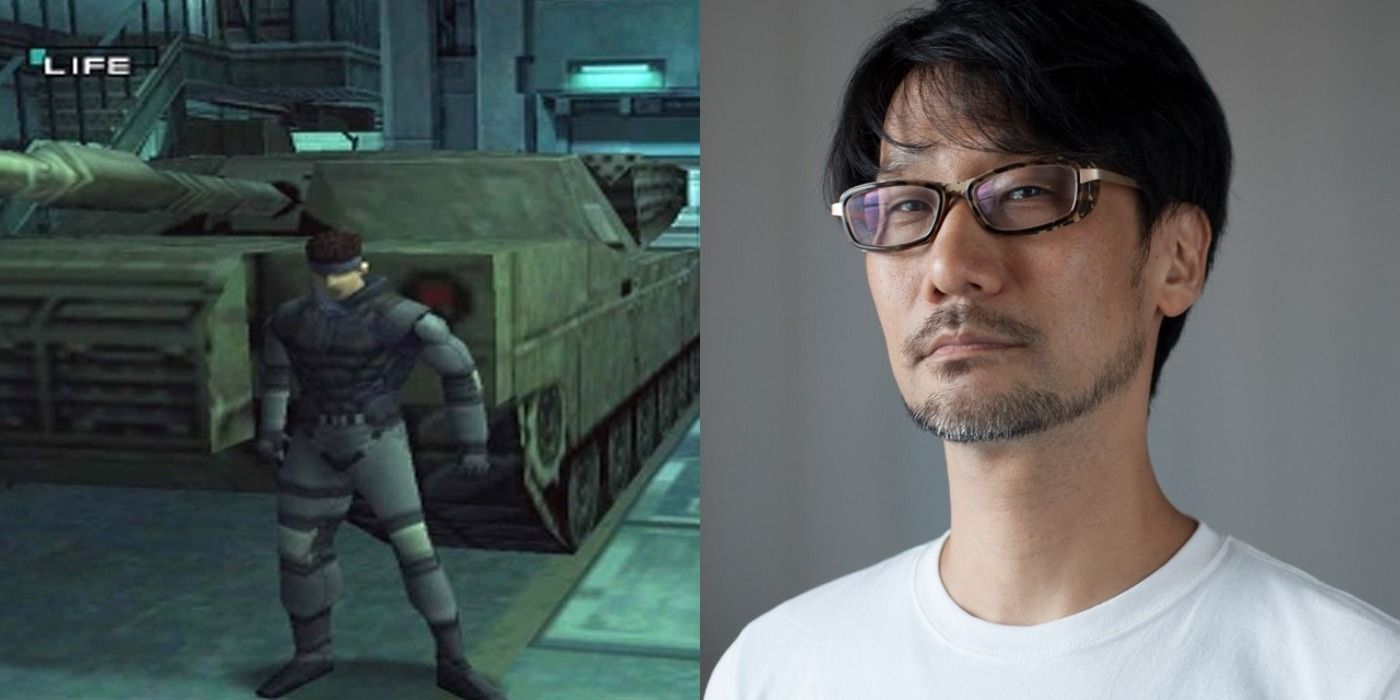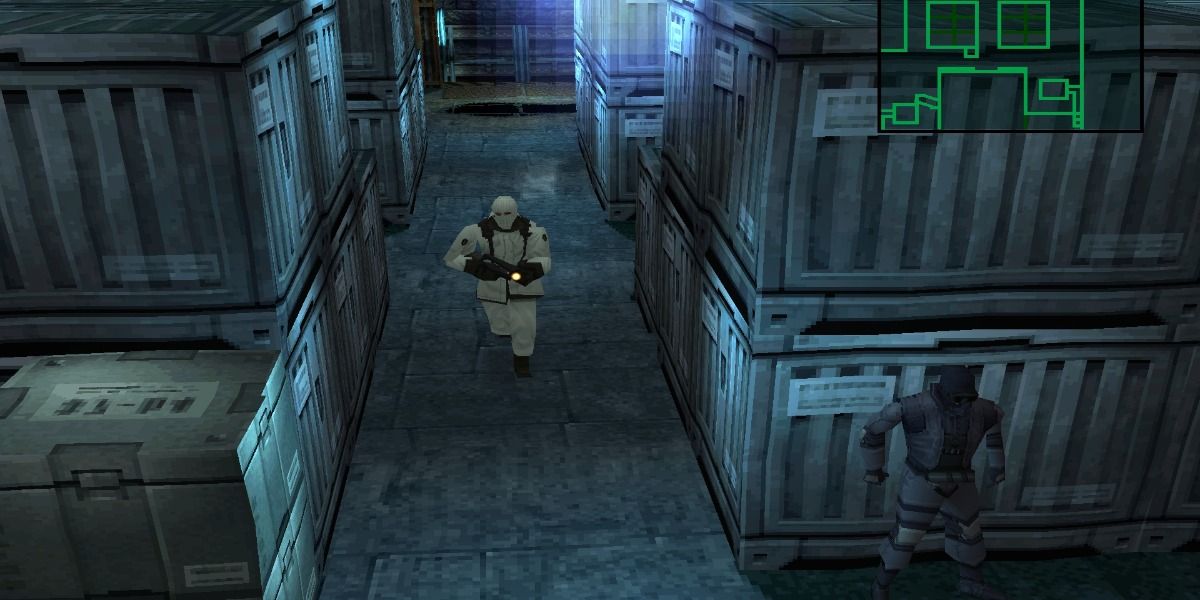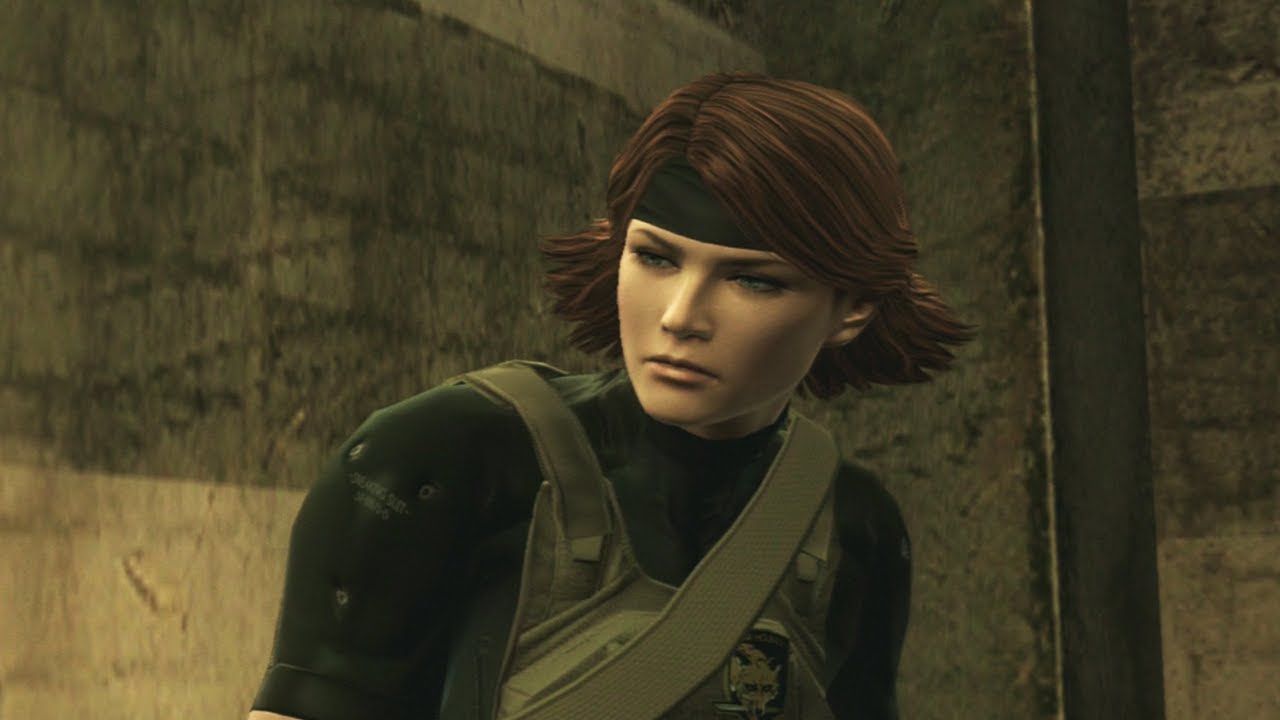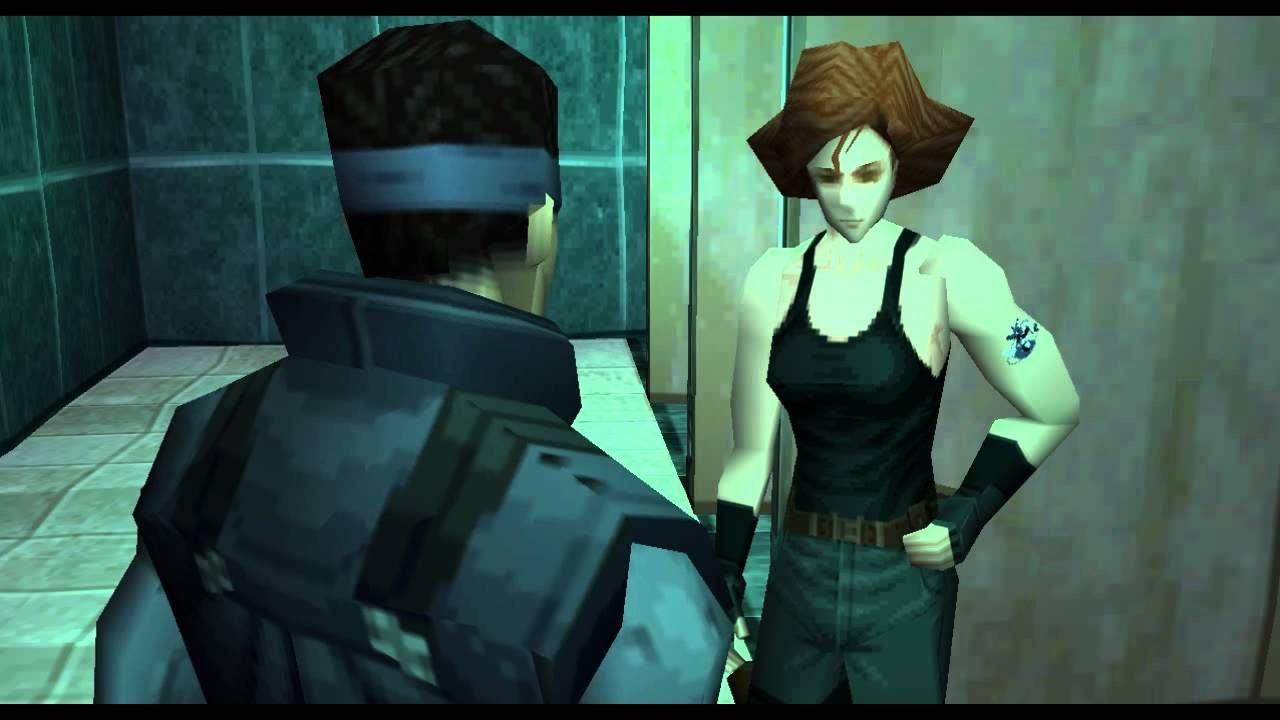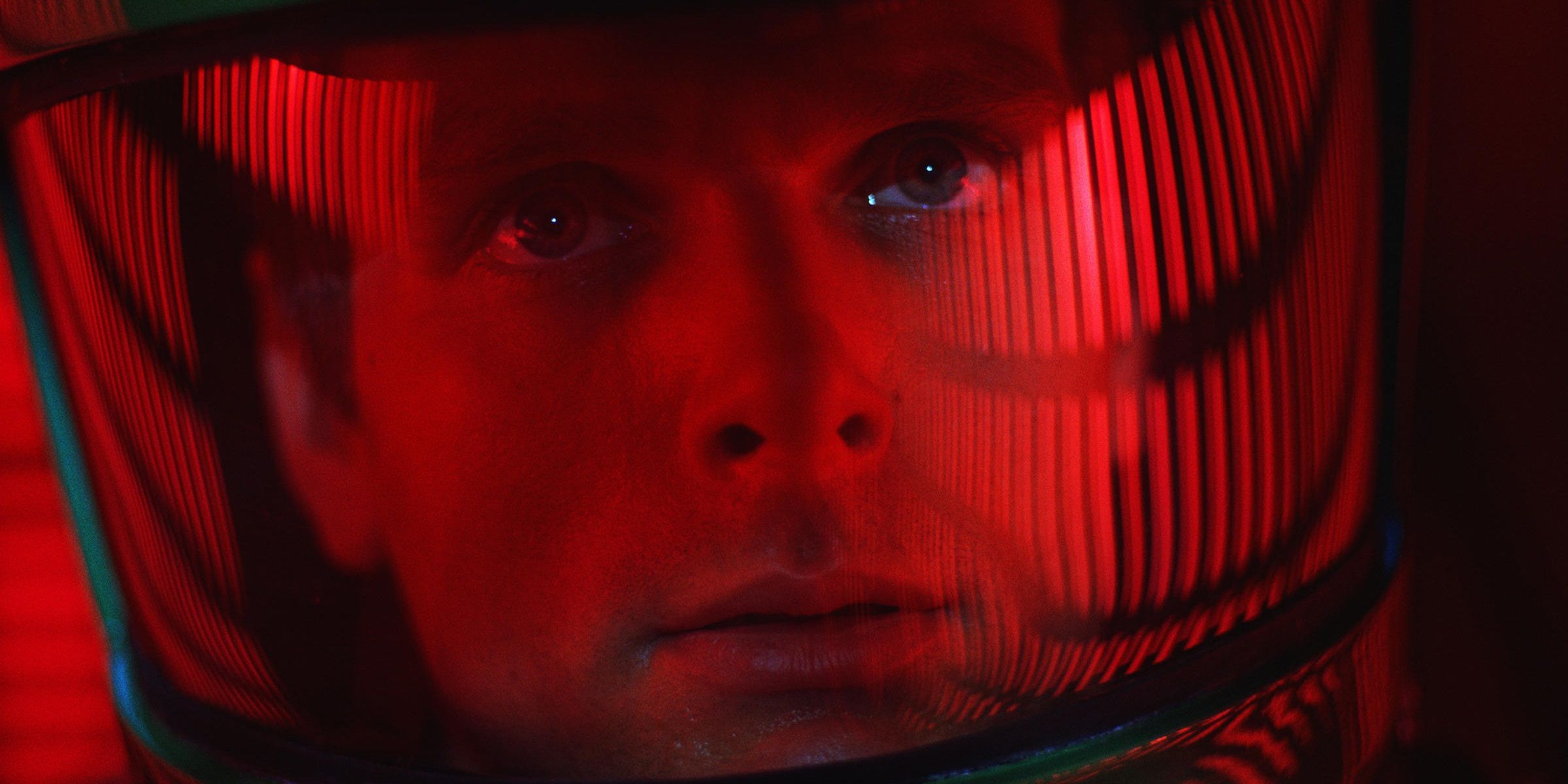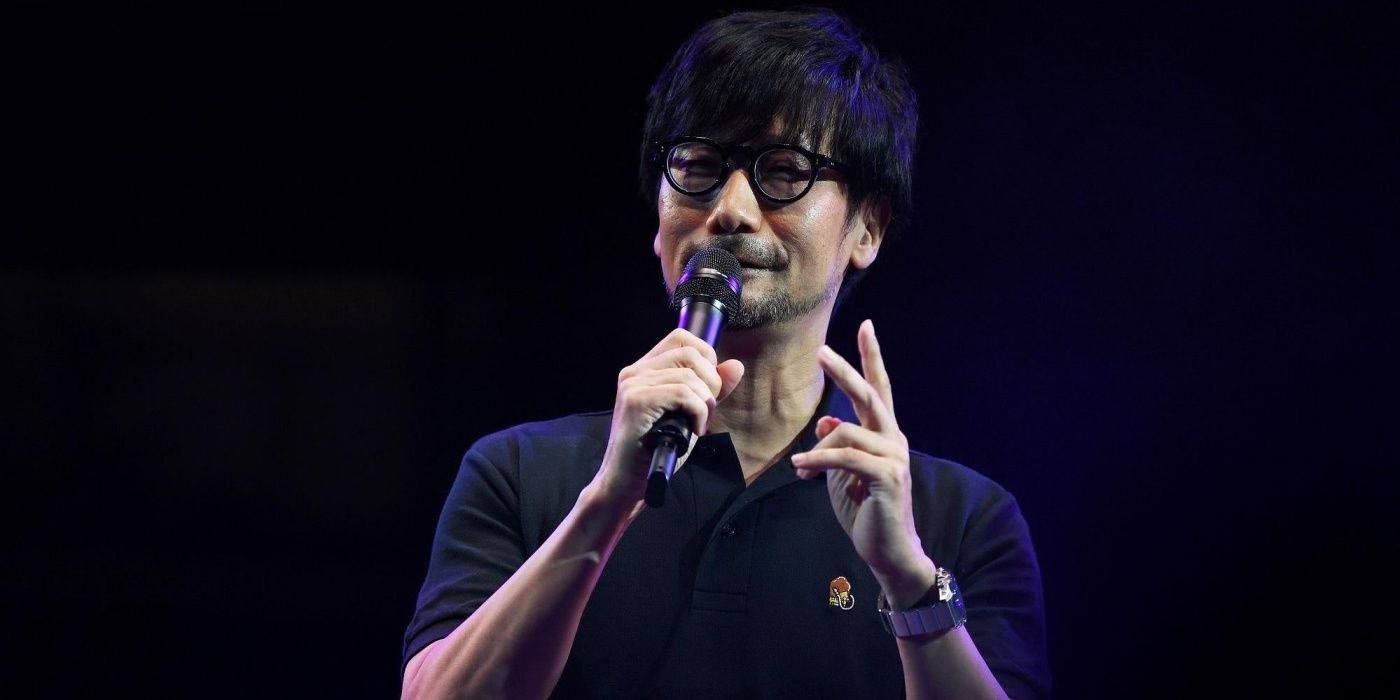Easily one of the most influential video games of all time, Hideo Kojima’s original Metal Gear Solid for the PS1 is a seminal piece of video game history. Developed by auteur video game developer Hideo Kojima for Japanese game developer Konami, the release of Metal Gear Solid was a revolutionary moment in the medium's history.
Metal Gear Solid’s use of stealth-action gameplay, its 3D model designs, and its cinematic cut scenes are amongst its most innovative developments. It’s impossible to look at any stealth-action game post-Metal Gear Solid and not see the influence. Almost 25 years on from its initial release in 1998, there’s still plenty for die-hard Metal Gear Solid fans to discover about the game that started it all.
Many Of The Voice Actors Used Fake Names
Metal Gear Solid is known for a number of things, but the vocal performances of the voice cast definitely rank among the highest. David Hayter’s iconic turn as Solid Snake stands out as one of the most legendary performances in video game history, and vocal performances from Doug Stone as the sympathetic villain Psycho Mantis and Christopher Randolph as computer genius Hal Emmerich, among a host of others, round out a solid voice cast. However, when the game was first released in 1998, many of the performers’ names were hidden.
While it’s never been confirmed why this was the case, the most likely explanation is due to the rules of SAG (Screen Actor’s Guild). The line between live-action acting and voice-acting was much blurrier when Metal Gear Solid was made, so the actors chose to use pseudonyms to hide their identities from the SAG. When the game was remade some years later as Metal Gear Solid: The Twin Snakes, all the real actors’ names were restored.
The Opening Song Is In Irish
Metal Gear Solid is a series littered with amazing music and musical moments. Very few game series’ have incorporated music into the medium the way Hideo Kojima has. Who can forget the lengthy ladder sequence in Metal Gear Solid 3: Snake Eater set to the incredible vocals of Cynthia Harrell’s James Bond-esque Snake Eater song as an iconic moment of the franchise. But, perhaps the most significant song in the history of the franchise plays during the opening of Metal Gear Solid where Snake swims into Shadow Moses: Aoife Ní Fhearraigh’s “The Best is Yet to Come”. In a strange turn, the song is actually sung in Irish.
While the song was written and produced by Rika Muranaka, who wrote the original lyrics in Japanese, the song that appears in the game is actually sung in the native Irish language (Gaeilge). Why a Japanese game producer, translating a game in English for a predominantly American market decided that the opening song should be in Irish is still a mystery to this day.
Meryl Originally Appeared In Another Hideo Kojima Game
One of the most iconic characters of the original Metal Gear Solid is FOXHOUND rookie agent Meryl Silverburgh. One of the most important characters in the game and the emotional rock that grounds Snake throughout the story, Meryl is one of the many great female Metal Gear Solid characters created by Kojima. The main difference with Meryl is that she wasn’t originally created for Metal Gear Solid.
Meryl originally appeared in an earlier Hideo Kojima game: Policenauts. The two versions of the character share the same basic design, and Meryl’s reappearance in the franchise in Metal Gear Solid 4: Guns of the Patriots further cements the similarities by giving her the bullet earrings her character model had in Policenauts.
The Theme That Plays Over The Konami Logo Is From Policenauts
Another connection with Policenauts is present in Metal Gear Solid when the game is loading before the main menu is reached. As the logo for Konami appears on the screen, the theme for the Policenauts can be heard in the background.
The Metal Gear Solid series is known to pay homage to other titles created by Hideo Kojima, including Zone of Enders, and the presence of the Policenauts theme at the beginning of the game is another sign of this lineage being honored.
Catching Meryl In A State Of Undress
Hideo Kojima as a video game creator is known as a pioneer in the medium, crafting innovative and revolutionary games such as the Metal Gear Solid series and Death Stranding. However, one of the criticisms often levied at Kojima is that his games have sexist, and even misogynistic, undertones. This was particularly evident in the reception of the character design of Quiet in Metal Gear Solid 5: The Phantom Pain. Littered throughout the Metal Gear Solid series are instances of female characters in various states of undress.
We can see this early in the series in Metal Gear Solid. If the player quickly chases after a disguised Meryl into the female bathroom, Meryl won’t have time to fully change and the player will see her in her underwear.
2001: A Space Odyssey Reference
Hideo Kojima has made no secret of his admiration of the cinematic form. The entire Metal Gear Solid series is clearly inspired by action movies and spy thrillers from the 1970s and 1980s, while the character designs are often ripped straight from the big screen (Snake’s design and name come from John Carpenter’s Escape from New York). Kojima’s all-time favorite movie 2001: A Space Odyssey gets a clear callout at the end of Metal Gear Solid.
If the player submits to Ocelot’s torture during the game, leading to Meryl dying, Snake will be joined by Otacon for the game’s ending. When Snake tells Otacon his real name is Dave, the two share a chuckle over the fact that Otacon’s real name is Hal, nodding to the characters of Dave and HAL 9000 in the Kubrick classic. Snake also jokes that two should take a trip to Jupiter, another nod to 2001: A Space Odyssey and the final destination of the Discovery One spaceship in the movie.
Kojima Used Lego To Build The Different Levels Of Game
Video game development technology has moved on and progressed so much in the years since the original Metal Gear Solid was released on the PS1, to the point where game engines like Unity can be used to develop 3D and 2D spaces with relative ease. This was not the case when Kojima and his team worked on the original Metal Gear Solid.
Kojima has stated that he used Lego to construct and visualize the levels of the original Metal Gear Solid, and its sequel Metal Gear Solid 2: Sons of Liberty. In behind-the-scenes footage (via YouTube), Kojima shows how he used Lego and a small camera to visualize what the world of the game would look like before they began to create it in the game’s engine.
No One Thought The Game Would Be A Success, Not Even Kojima
It’s hard to imagine the idea of Metal Gear Solid being anything other than a classic game of the genre. However, Kojima has admitted that neither he nor anyone else, expected the game to sell well at all.
During a Twitch AMA with Geoff Knightley in 2014 (via Polygon), Kojima stated that expectations for Metal Gear Solid were low, giving him the freedom to do anything he wanted. The result was a huge triumph for both Kojima and his employer Konami, with Metal Gear Solid going on to sell over seven million units worldwide.

